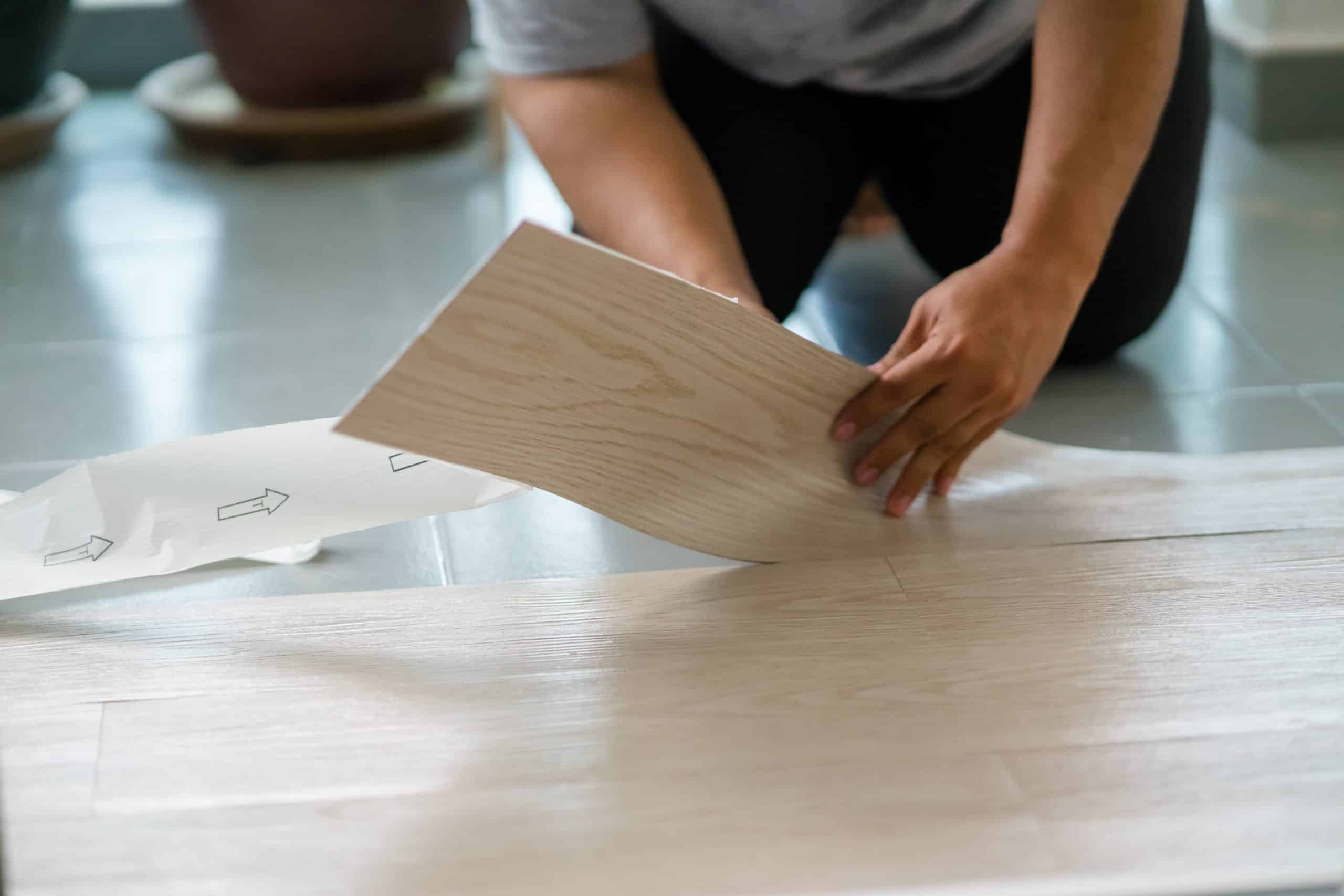Vinyl flooring has gained immense popularity in recent years due to its durability, versatility, and ease of installation. Homeowners often wonder whether they can lay vinyl flooring over existing tile, seeking to avoid the time-consuming and messy process of removing the old tile. In this comprehensive guide, we’ll explore the feasibility of laying vinyl flooring over tile, examining the pros, cons, and important considerations to help you make an informed decision for your home.
Understanding Vinyl Flooring:
Before delving into the question of whether vinyl flooring can be installed over tile, let’s first understand what vinyl flooring is and its various types:
Vinyl flooring is a synthetic flooring material made from polyvinyl chloride (PVC) and other additives. It comes in several forms, including:
Vinyl Sheet Flooring:
Large rolls of vinyl flooring that are typically installed in one continuous sheet, provide a seamless look.
Vinyl Tile Flooring:
Individual tiles made of vinyl that mimic the look of ceramic or stone tiles.
Vinyl Plank Flooring:
Long, narrow strips of vinyl that simulate the appearance of hardwood flooring.
All types of vinyl flooring offer benefits such as durability, moisture resistance, and easy maintenance, making them suitable for various rooms in the home, including kitchens, bathrooms, and basements.
Can You Lay Vinyl Flooring Over Tile?
The short answer is yes, you can lay vinyl flooring over tile, but several factors need to be considered before doing so. Let’s explore the pros and cons of this approach:
Pros of Installing Vinyl Flooring Over Tile:
Time and Cost Savings:
One of the primary benefits of laying vinyl flooring over tile is the time and cost savings associated with avoiding tile removal. Removing old tiles can be a labor-intensive and messy process, requiring specialized tools and professional expertise. By installing vinyl flooring directly over the existing tile, you can save both time and money on demolition and disposal costs.
Minimal Disruption:
Installing vinyl flooring over tile minimizes disruption to your daily life, as there’s no need to remove furniture or vacate the space during the installation process. This can be particularly advantageous for busy households or commercial spaces where downtime must be kept to a minimum.
Leveling Surface:
In many cases, existing tile floors provide a relatively smooth and level surface for vinyl flooring installation. This eliminates the need for extensive subfloor preparation, such as leveling or patching, which may be required when installing vinyl over other types of flooring materials.
Cons of Installing Vinyl Flooring Over Tile:
Height Increase:
One potential drawback of laying vinyl flooring over tile is the increase in floor height. Since vinyl flooring adds thickness to the floor, installing it over existing tile can result in a noticeable height difference, especially in doorways or transitions between rooms. This may require adjustments to doors, trim, and other architectural elements to accommodate the change in height.
Subfloor Compatibility:
While vinyl flooring can be installed over most types of existing flooring, including tile, it’s essential to ensure that the subfloor is in good condition and compatible with the vinyl installation. Cracked or uneven tile surfaces may telegraph through the vinyl, leading to visible imperfections in the flooring. Additionally, some types of vinyl flooring may require specific subfloor preparations, such as the installation of an underlayment or moisture barrier, to ensure proper performance and longevity.
Adhesion and Stability:
Proper adhesion and stability are crucial for the long-term performance of vinyl flooring. While vinyl flooring can adhere well to smooth, clean tile surfaces, certain types of tile may not provide the ideal substrate for adhesion. Porous or textured tiles, for example, may not offer sufficient grip for the vinyl adhesive, potentially leading to lifting or delamination of the flooring over time. Additionally, if the existing tile floor has significant cracks or movement, it may compromise the stability of the vinyl flooring installed over it.
Important Considerations:
Before deciding to install vinyl flooring over tile, consider the following factors:
Condition of the Tile:
Assess the condition of the existing tile floor to determine whether it’s suitable for vinyl flooring installation. Look for signs of damage, such as cracks, chips, or loose tiles, that may affect the stability and performance of the vinyl flooring.
Subfloor Preparation:
Ensure that the tile surface is clean, smooth, and free of debris before installing vinyl flooring. Repair any damaged or uneven areas and address any moisture issues that may affect the performance of the vinyl.
Type of Vinyl Flooring:
Choose the appropriate type of vinyl flooring for your installation. While luxury vinyl planks and tiles are generally suitable for installation over tile, some types may require additional preparation or adhesives for optimal performance.
Installation Method:
Consider the installation method for the vinyl flooring, whether it’s glue-down, floating, or self-adhesive. Each method has its advantages and considerations, so choose the one that best suits your needs and the condition of the existing tile floor.
Conclusion: Can You Lay Vinyl Flooring Over Tile Considerations?
Can You Lay Vinyl Flooring Over Tile is indeed possible and can offer several benefits, including time and cost savings and minimal disruption during installation. However, it’s essential to carefully assess the condition of the existing tile floor, ensure proper subfloor preparation, and choose the appropriate vinyl flooring type and installation method for optimal results. By considering these factors and weighing the pros and cons, you can make an informed decision about whether installing vinyl flooring over tile is the right choice for your home. If you decide to proceed, be sure to follow manufacturer guidelines and seek professional advice if needed to ensure a successful and long-lasting installation.


